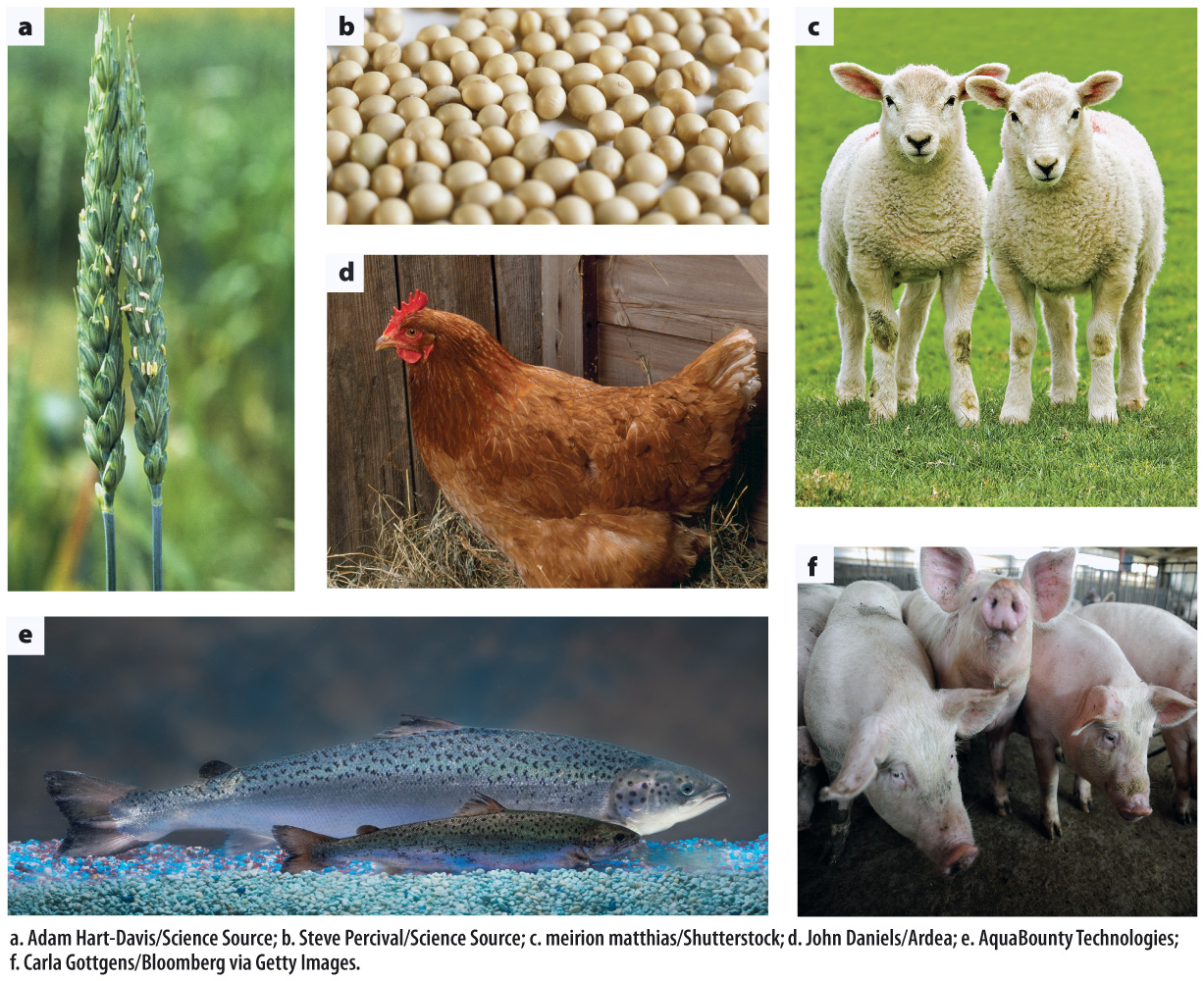Recombinant DNA is the basis of genetically modified organisms.
Applications of recombinant DNA have gone far beyond genetically engineered bacteria. Using methods that are conceptually similar to those described for bacteria but differing in many details, scientists have been able to produce varieties of genetically engineered viruses and bacteria, laboratory organisms, agricultural crops, and domesticated animals (Fig. 12.20). Examples include sheep that produce a human protein in their milk used to treat emphysema, chickens that produce eggs containing human antibodies to help fight harmful bacteria, and salmon with increased growth hormone for rapid growth. Plants such as corn, canola, cotton, and many others have been engineered to resist insect pests, and other engineered products are rice with a high content of vitamin A, tomatoes with delayed fruit softening, potatoes with waxy starch, and sugarcane with increased sugar content. To model disease, researchers have used recombinant DNA to produce organisms such as laboratory mice that have been engineered to develop heart disease and diabetes. By studying these organisms, researchers can better understand human diseases and begin to find new treatments for them.

Genetically engineered organisms are known as transgenic organisms or genetically modified organisms (GMOs). Transgenic laboratory organisms are indispensable in the study of gene function and regulation and to identify genetic risk factors for disease. In crop plants and domesticated animals, GMOs promise enhanced resistance to disease, faster growth and higher yields, more efficient utilization of fertilizer or nutrients, and improved taste and quality. But there are concerns about unexpected effects on human health or the environment, the increasing power and influence of agribusiness conglomerates, and ethical objections to tampering with the genetic makeup of animals and plants. Nevertheless, more than 250 million acres of GMO crops are grown annually in more than 20 countries. The majority of this acreage is in the United States and South America. Resistance to the use of GMOs in Europe remains strong and vocal.